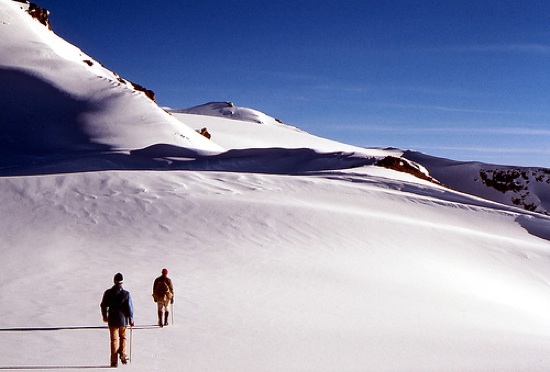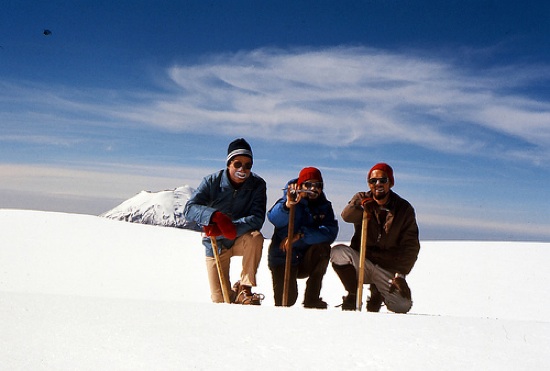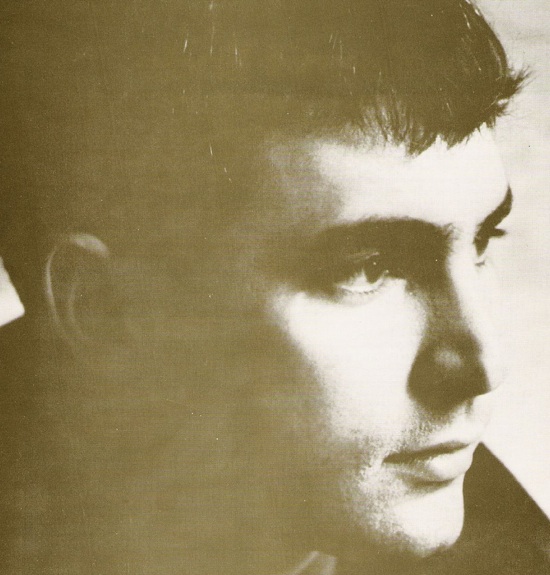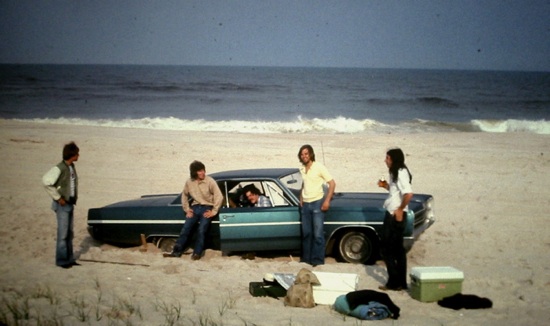Iztaccihuatl, September 1974

 AMAZING photos from Iztaccihuatl, September 1974Iztaccihuatl:
AMAZING photos from Iztaccihuatl, September 1974Iztaccihuatl:
Iztaccihuatl is the third highest mountain in Mexico, after the Pico de Orizaba (5,636 m) and Popocatépetl (5,426 m). Its name is Nahuatl for "white woman".The mountain has four peaks, the highest of which is 5,230 m above sea level. Together, the peaks are seen as depicting the head, chest, knees and feet of a sleeping female figure, which is visible from either the east or the west. Iztaccíhuatl is a mere 70 km to the southeast of Mexico City and is often visible from the capital, depending on atmospheric conditions.
Wind Cave National Park
 Wind Cave National Park, South Dakota:
Wind Cave National Park, South Dakota:
American Indian stories dating back centuries speak of a "hole that breathes cool air" in the Black Hills. Cowboys came across a breathing hole in 1881 and the exploration of Wind Cave began. In 1903 Wind Cave became the first cave anywhere in the world to be designated a national park. Cave explorers are still finding new rooms and passages in Wind Cave, the fourth longest cave in the world. The cave is well known for its outstanding display of boxwork, an unusual cave formation composed of thin calcite fins resembling honeycombs.
the backroom, the alley, or the trusty woods
 Ain't no 60 Chevy, but still....
Ain't no 60 Chevy, but still....
Sundown In Mexico
Grassy Ridge Bald
 Campout on Grassy Ridge Bald, NC. Elevation 6,189 ft. Temperature range -5 F to 22 F.Appalachian Bald:
Campout on Grassy Ridge Bald, NC. Elevation 6,189 ft. Temperature range -5 F to 22 F.Appalachian Bald:
Balds are mountain summits or crests covered primarily by thick vegetation of native grasses or shrubs occurring in areas where heavy forest growth would be expected.
Grigsby Prairie


 Archived pictures from the Grigsby Prairie in Barrington, Illinois, the town that I grew up in.Citizens For ConservationBarrington Area Library Flickr Page
Archived pictures from the Grigsby Prairie in Barrington, Illinois, the town that I grew up in.Citizens For ConservationBarrington Area Library Flickr Page
Koko
Dennis Linde
 Dennis Linde wrote Elvis' "Burning Love" and that Dixie Chicks tune "Goodbye Earl." There were many others in between, but those are the two we all know and love. Sort of. I secretly think the Dixie Chicks are great, but that's for another time.Back in 1970, Linde made his first solo album and he called it Linde Manor. I've posted some songs from the album before and man oh man is it a fine one."Burning Love" on the back of a horse:MP3: Dennis Linde - Call Me HoneyMP3: Dennis Linde - I Don't Want Nobody 'Ceptin' You
Dennis Linde wrote Elvis' "Burning Love" and that Dixie Chicks tune "Goodbye Earl." There were many others in between, but those are the two we all know and love. Sort of. I secretly think the Dixie Chicks are great, but that's for another time.Back in 1970, Linde made his first solo album and he called it Linde Manor. I've posted some songs from the album before and man oh man is it a fine one."Burning Love" on the back of a horse:MP3: Dennis Linde - Call Me HoneyMP3: Dennis Linde - I Don't Want Nobody 'Ceptin' You
Meteor Crater
About 50,000 years ago, a 150-foot lump of iron and nickel, a renegade from the asteroid belt between Mars and Jupiter, sliced through the sky out of the northeast at seven miles per second. When it hit it tore up the landscape in an instant, excavating several hundred million tons of dirt and rock and flipping layers of sandstone like pancakes.
I Was Shivering Inside
 Above: Aspen Highlands, Colorado, January 2009Good Lord.MP3: Donny Hathaway - Jealous Guy
Above: Aspen Highlands, Colorado, January 2009Good Lord.MP3: Donny Hathaway - Jealous Guy
Exuma
Theodore de Bry
In 1590 Theodorus de Bry and his sons published a new, illustrated edition of Thomas Harriot's Brief and True Report of the new found Land of Virginia about the first English settlements in North America (in modern-day North Carolina). His illustrations were based on the watercolor paintings of colonist John White.
More Theodore de Bry here** See Post Below
John White
John White (c. 1540 – c. 1593), was an English artist, and one of several early "Virginian" settlers who sailed with Richard Grenville in 1588 to the modern day coast of North Carolina. During this journey he made numerous famous drawings with watercolour of the landscape and native peoples. These works are significant as they are the most informative illustrations of a Native American society of the Eastern seaboard, and predate the first body of "discovery voyage art" created in the late eighteenth century by the artists who sailed with Captain James Cook. They were later engraved by Theodore de Bry and became widely known; all the surviving original paintings are now in the print room of the British Museum.
More John White here** See Post Above
How Does It Feel To Be One Of The Beautiful People?
Mount Washington
 NYT story on the mighty Mt. Washington:
NYT story on the mighty Mt. Washington:
Our destination on this cloudy mid-December morning was the top of Mount Washington in the Presidential Range of New Hampshire. At 6,288 feet, Mount Washington is the highest peak in the Northeast. Thousands of hikers make the ascent in warmer months, most often starting, as we did, at the Appalachian Mountain Club’s Pinkham Notch Visitor Center on the east side of Mount Washington. In winter, the four-mile hike to the summit, which gains about 1,000 feet of elevation with each mile, attracts a hardier lot.But it’s not the height or the steepness of the mountain that impresses most people — it’s the weather. The mountain has a long and infamous reputation: Hurricane-force gusts are typically recorded several times a week in winter, with the winds topping 100 miles an hour at least weekly. In 1934, the Mount Washington Observatory measured the fastest wind speed recorded on the earth’s surface, a stunning 231 m.p.h.
Whoa Lord.
East Of El Paso
Tarpon
 In 1973, Richard Brautigan, Tom McGuane, and Jim Harrison went down to the Florida Keys to fish for tarpon. Christian Odasso and Guy de la Valdene filmed it and then asked Jimmy Buffett to make some music to go along with the footage. I haven't seen Tarpon yet, but my oh my do I want to. You can see what it looks like here and, if you'd like, you can get much more information here.Thanks Kalen.
In 1973, Richard Brautigan, Tom McGuane, and Jim Harrison went down to the Florida Keys to fish for tarpon. Christian Odasso and Guy de la Valdene filmed it and then asked Jimmy Buffett to make some music to go along with the footage. I haven't seen Tarpon yet, but my oh my do I want to. You can see what it looks like here and, if you'd like, you can get much more information here.Thanks Kalen.
Vetiver
 MOKB posted a new Vetiver track today. Has Andy Cabic always been boring?MP3: Vetiver - Everyday
MOKB posted a new Vetiver track today. Has Andy Cabic always been boring?MP3: Vetiver - Everyday










